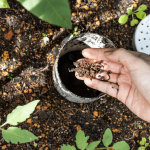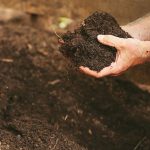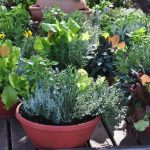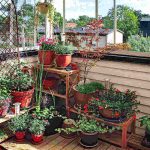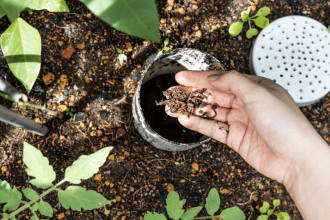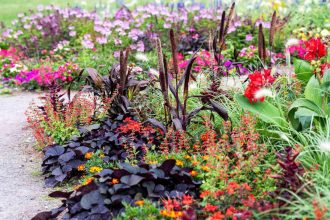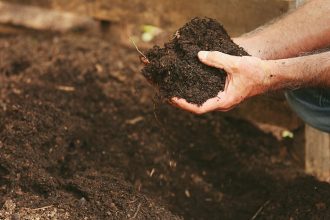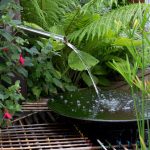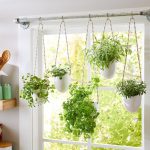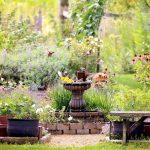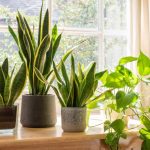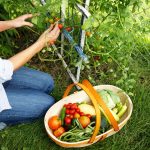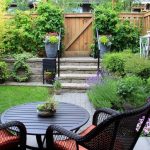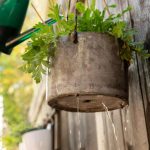In the harmony of nature’s cycle, there exists a hidden treasure waiting to be uncovered in your very own backyard – organic compost. A rich and transformative blend of nutrients that breathe life into soil, organic compost is a sustainable solution to enhancing your garden’s health and productivity. In this article, we will guide you through the art of creating your own organic compost at home, a journey that not only benefits your plants, but also nurtures the environment. Join us as we delve into the magic of composting and unearth the secrets to a thriving garden ecosystem.

Choosing the Right Materials for Your Organic Compost
When it comes to creating your own organic compost at home, choosing the right materials is crucial for the success of your composting process. You want to make sure you have a good balance of green and brown materials to ensure that your compost pile breaks down properly and efficiently.
- Green Materials:
- Kitchen scraps (fruits, vegetables, coffee grounds)
- Grass clippings
- Weeds (make sure they have not gone to seed)
- Manure (from herbivores only)
- Brown Materials:
- Dry leaves
- Straw
- Newspaper
- Cardboard
By mixing these green and brown materials together in the right ratio, you’ll provide the essential carbon and nitrogen that microorganisms need to break down the organic matter into nutrient-rich compost for your garden.
| Green Materials | Brown Materials |
|---|---|
| Kitchen scraps | Dry leaves |
| Grass clippings | Straw |
| Weeds | Newspaper |
| Manure | Cardboard |
Creating the Ideal Environment for Composting Success
is essential for producing high-quality organic compost at home. By following a few simple steps and providing the right conditions, you can accelerate the decomposition process and achieve nutrient-rich compost that will benefit your garden.
To create the perfect composting environment, consider the following tips:
- Choose the right location: Select a well-drained area with access to sunlight. Avoid placing your compost bin directly on grass as it can inhibit airflow.
- Use the right compost bin: Invest in a sturdy and well-ventilated compost bin to provide a structured environment for decomposition.
- Add the right materials: Balance your green (nitrogen-rich) and brown (carbon-rich) materials to maintain an optimal carbon-to-nitrogen ratio for decomposition.
- Turn the compost: Regularly aerate your compost pile by turning it with a pitchfork to introduce oxygen and speed up the decomposition process.
By following these guidelines and maintaining a consistent composting routine, you can create the ideal environment for composting success and produce nutrient-rich organic compost for your plants.
Maintaining and Turning Your Compost Pile Regularly
Regularly maintaining and turning your compost pile is essential for successful composting. By following a few simple steps, you can ensure that your organic waste breaks down efficiently and effectively.
First, turning your compost pile regularly allows for oxygen to reach the microorganisms breaking down the materials. This helps speed up the decomposition process and prevents the pile from becoming too compacted. Aim to turn your compost pile every 1-2 weeks, or whenever it starts to heat up.
Secondly, maintaining the balance of green (nitrogen-rich) and brown (carbon-rich) materials in your compost pile is crucial. Green materials include fruit and vegetable scraps, coffee grounds, and grass clippings, while brown materials include leaves, straw, and newspaper. Aim for a 3:1 ratio of brown to green materials to ensure proper decomposition.
Lastly, ensure that your compost pile stays moist but not waterlogged. Regularly check the moisture levels and add water as needed to keep the pile damp, like a wrung-out sponge. This will help the microorganisms thrive and break down the materials efficiently.
Harvesting and Using Your Organic Compost for Healthy Plant Growth
Making your own organic compost at home is a great way to reduce waste and nourish your plants naturally. Composting is a simple process that involves breaking down organic materials like food scraps, yard waste, and paper into nutrient-rich soil that plants love. By following a few basic steps, you can create a healthy compost pile that will help your garden thrive.
Start by choosing a location for your compost pile. Ideally, it should be in a spot that gets some sunlight and is easily accessible. Next, gather your materials. You’ll need a mix of “green” materials like fruit and vegetable scraps, grass clippings, and coffee grounds, as well as “brown” materials like leaves, straw, and shredded paper. Layer these materials in your compost bin or pile, making sure to keep it moist but not soggy.
Turn your compost pile regularly to aerate it and speed up the decomposition process. In a few months, you’ll have rich, dark compost that is ready to use in your garden. Spread a layer of compost around your plants to help retain moisture, suppress weeds, and provide essential nutrients. Your plants will thank you for the extra care, and you’ll enjoy the benefits of healthy, thriving garden beds.
In conclusion, creating organic compost at home is not only beneficial for the environment, but also for your garden and overall well-being. By following the simple steps outlined in this article, you can easily turn your kitchen scraps and yard waste into a rich, nutrient-dense soil amendment that will help your plants thrive. So why not give it a try and see the difference it can make in your garden? Happy composting!


